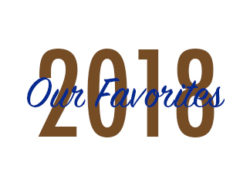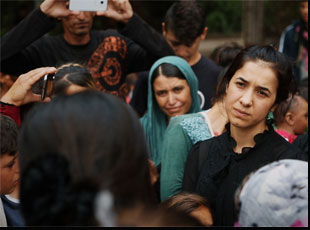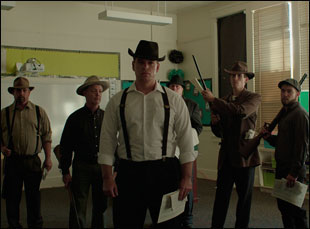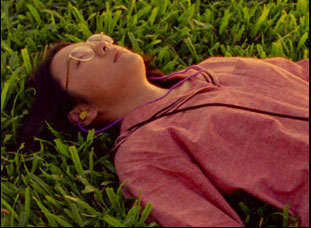This week, we’re celebrating the people who made some of the best films of the past year possible.

“Sandi [Tan] just cold-called me one day up out of the blue and said, ‘I’ve seen a lot of your movies, I like your work and I have this film that I’m making and I wanted to talk about possibly doing sound for it,” recalls Everson, who couldn’t have known just yet that the director of “Shirkers” was so appreciative of the art of sound design that a screening of “Blade Runner 2049” made her cry tears of joy.
Tan didn’t yet have even a raw assembly of the film just yet, only a six-minute long compilation of footage from her travels, attempting to learn exactly what happened after her film professor absconded with all the reels of the feature that she and her friends had worked so hard to make in Singapore. Surely, she had heard of Everson from his growing reputation as one of the most inventive sound designers in the field, working with brothers Bill and Turner Ross to pull the boozy haze out of the night sky of New Orleans in “Tchoupitoulas” or feel gravel creeping into your show while watching “Western” or transporting audiences to Tuscany in Jeff Malmberg’s “Spettacolo” through the whistling wind, though that notoriety has kept his dance card quite full of late. Still, as someone who gravitated towards sound design in film school because of all the possibilities associated with the unseen, he was more than happy to take a look.
“I remember watching it and being like, ‘I don’t know what this movie’s about, but I’m so fascinated to learn more,’” recalls Everson. “That was one of those out-of-the-blue surprises that I was like, ‘Yeah, sure.’”
Everson would spend a year simply having conversations with Tan about the sound before actually getting his hands on “Shirkers,” contributing to the staggering emotional resonance of the film that flourishes from its soundtrack, but also helped as a practical manner since he also ended up working on two of the other truly monumental films of 2018 – Alexandria Bombach’s “On Her Shoulders,” about the Yezidi peace activist Nadia Murad, and Robert Greene’s “Bisbee ’17,” in which an Arizona mining town is roused to reenact a shameful deportation of Mexican immigrants who attempted to unionize a hundred years earlier.
While the three films are wildly different from each other, each of them notably concern memory, collectively in the case of “Bisbee” where the present is built upon a covenant of silence regarding the deportation where the echoes of the past would still seem to eek out in rusty steel and creaky old wood that can often be heard surveying the town in the days leading up to reenactment, lending credence to the belief by some in town that they live side-by-side with ghosts. For the individual portraits of “Shirkers” and “On Her Shoulders,” Everson is able to convey what’s inside the minds of his film’s subjects by varying what’s vivid and what falls away sonically in any given moment, with Tan cleverly assigning different sounds to different characters to occupy a certain mental space as the filmmaker fights through the frustration of losing her ambition in thinking her first film was gone forever, and with Bombach, gracefully handling Murad’s ever-present trauma of surviving a massacre in her village at the hands of ISIS and having to live through it time and again as she testifies around the world to marshal the resources necessary to prevent it from happening in the future.
In the midst of another busy fall preparing a new batch of innovative docs for Sundance, Everson graciously took the time to talk about the three extraordinary films that began their journey there last year and finding the room in nonfiction filmmaking for innovation and experimentation.

That movie was really fascinating for me as well because we did a lot of sound design through silence and creating spaces and creating emptiness, which is the opposite of what you think of for sound design. A lot of times, [a person would] think you’re adding sound, you’re editing stuff in, you’re building these soundscapes. but it’s a lot more tricky [with silence] because there’s nothing to hide behind. You can’t just throw a bunch of sounds out there and let that distract or cover up things. Every tiny decision feels much more magnified because it’s there, standing on its own and then when you drop away down to nothing or you have dialogue playing against nothing else going on around it, everything has to fit really perfectly and a lot of “On Her Shoulders” was really subtractive in which you’re carving out silences and the effect was two-fold. One we didn’t want to add too much because it’s such a delicate subject we didn’t want it to feel manipulative, but also to create that feeling where the world drops away, it felt like trying to understand the separation from the world that it seems like Nadia has to go through with her life experiences and the burden she has to carry and the responsibility that she has. Everyday people don’t have to deal with the weight of all that, so creating these silences gives the audience both time to reflect on what they’re feeling emotionally and a chance to share this internal headspace a little bit.
When you’re trying to tell anyone’s story in documentary, it’s like, “How do you fit someone’s whole life into this hour-and-a-half?” I really like the opening of that film where you see [Nadia] writing in her journal and you’re hearing both news clips and voices, so we wanted to try and convey how these experiences she goes through stay with her. We didn’t want to just play the audio straight up. We wanted to give it a sense of memory, so a lot of times when we would transition out from footage, like again in the opening, she’s in this crowd of people and it’s loud and we cut to her in her study, and it’s a big juxtaposition from all these voices to the quiet in her own personal space, so we echoed out [the cacophony] as we post-lapsed that initial scene, and added some reverb and let that linger in the air a little bit more, which gave a sense of being imprinted [on her mind] or keeping the background and the sounds of the world more at arm’s length in certain parts.
Silence can be such a powerful storytelling tool and one that’s very often overlooked or underutilized, and on that film, I loved how Alexandria wasn’t afraid of letting an interview drop off or fade away into nothing or hear the question and not the answer or structure these pauses. She had a really, really strong vision for the movie she wanted to make and it gave me such a clear structure from when I started working on it and it was a really wonderful process working with Alexandria, even though for me that was a difficult film just because of the subject matter. But it was another fulfilling project to work on. I just loved working with everyone that we worked with on that movie and even from the first rough cut that I watched, I knew right away it was something that I wanted to be a part of, if I could.
Watching “Bisbee ’17” again, I was struck by how silence was used in that film as well.
I give a lot of credit to Robert for the vision that he has, but also the way the edit was constructed. Even before I come onto a project, the first line of sound design is the picture edit. That gives me an amazing playground to start with and right away in “Bisbee,” one of the first shots that you see after the opening text is the guy standing in the schoolyard — and they do this throughout the movie — they give him these long pauses of silence before the action [in the scene] starts. That’s so unusual and that’s a very Robert thing to do — to play with the formal structures of documentary, so right away you get this really uncomfortable gap where you’re wondering, “What is going on?” before they start speaking. [laughs] I love that so much in terms of setting the tone and the way [Robert] edited those long pauses into the structure really gave us a lot to play with [in terms of] moments of waiting and letting the atmosphere play a role, knowing that we also wanted to have this haunted feeling as well. Then on top of that, you bring in Keegan [DeWitt]’s score, which has such interesting and unusual instrumentation.
When you’re working with all these elements, it’s easy to see, “Okay, this is the tone that the film’s building. Let’s jump in with both feet and see what we can do to accentuate that with sound design and mix that in a way where we’re really trying to bring these elements out as best as we can.” The way they played with the structure of reenactments [where] you’re seeing these things as reenactments, but then you’re also seeing it from these behind the scenes angles that you don’t normally see in reenactments, it’s all in the way that Robert plays with viewpoints and the way he stylizes things and pushes the audience to think about things differently, so we wanted to push the sound design in similar ways.

No, unfortunately. For a lot of the films I work on, I try to travel out on location and be a part of that, just from the experiential side as well as from a custom sound recording side. I find that any film that takes place in a certain particular area that has a personality or an event, to be able to experience that really helps me in the construction of the world-building, both emotionally and truthfully for nonfiction films. For “Contemporary Color,” I was there for the concert shoots, and just recently I went to Iceland for an upcoming film called “The Seer and the Unseen.” “American Factory,” the project I’m working on right now, we went over the summer to do a recording trip to this auto factory in Ohio, so I really try and do that as much as I can.
For “Bisbee,” that was the plan, but everything got hectic as they were trying to manage this really, really ambitious shoot and my schedule got really, really tied up, so we made the decision that I’d stay behind in L.A., but we stayed in really good touch throughout. Robert had such a firm grasp on the movie he wanted to make that they were able to really educate me on how the town of Bisbee sounds, but also how the ghost world they wanted to create within that. There were a lot of times where we could take artistic license that sometimes you don’t get the leeway for [in] nonfiction films because Robert’s vision was always of these two worlds coexisting together on top of one another – the real life/modern-day Bisbee, but then this haunted feeling of a hundred years of ghosts that were built up from their past.
You mentioned Keegan DeWitt’s score – I wouldn’t know where your work starts or his ends on “Bisbee,” and I’m sure it’s different from film to film, but is there a lot of interaction between you and the composers?
Every film is its own unique animal, which is something I really love about filmmaking. I never get bored. [laughs] Each has its own style and shape that becomes clear as you move through it and every new film I start, I always [think], “Okay, what am I going to discover this time? What are we going to do differently? For “On Her Shoulders,” the music was basically was composed and delivered to me along with the edit, so I had that as a starting point. Alexandria worked with Patrick in England really, really closely and they fine-tuned everything over there, and he created this gorgeous music that affected me really emotionally, but they also used it so sparingly, which again is a testament to how Alexandria was so meticulous with her edit and she knew how these pieces wanted to fit together so strongly. A lot of times when you’ve got such beautiful music, there’s this temptation to just run it wall-to-wall from start to finish, and I love the fact that the music is used so sparingly that when it does come, it has such an impact, so that was something where the score came as a complete entity that I could start working against, which is always wonderful when it happens.
Both “Bisbee” and “Shirkers” were very different because the scores were evolving. Keegan and Robert have a relationship where instead of having all the music composed and placed in, Keegan would create these tones or fragments [of music] and give them to Robert as stems and Robert could edit and manipulate them and come up with ideas and that they would bounce back and forth [to create] these tonal layers and when it came time for my turn for the sound design and the mix, a lot of it was in place, but we had a little bit more freedom to maneuver or add things. It did blur a little bit between music and sound design because a lot of times we’d have these metallic tones that would just ring and hang there and we had everything as these stem fragments, so a lot of times, Robert would be like, “Oh, what if we moved this [piece of music] over here or we slide this here?” And it definitely felt a lot more fluid than a lot of times where you get a piece of music and it has a start and an end and you work around it.
And then with “Shirkers,” everything blurs across all lines. That was a true “anything goes” collaboration where Sandi and Lucas [Celler] and Kimberley [Hassett] in editorial just played with so much sound and music cutting and then the composer Ishai [Adler] in Israel also composed a lot of original music. He remixed and took fragments of other people’s music like the singer Weish, who does all the vocal instrumentals, and made original music with her music. He also had a lot of sound design in his music, which he gave to me as its own separate stems, so I could utilize the sound design or turn off his sound design, if I wanted. In response to all this, some of the stuff that I would make would be musical to fit in. It was like all these little pieces were coming from everywhere and it almost didn’t really matter who was doing what. It was just this wonderful, chaotic finger-painting swirl that felt like this explosion of creativity, and it really had this collage feel, which I think is appropriate for the content of “Shirkers.” It reminds me of the scenes in the movie where Sandi is talking about the zines she used to make [when she was a teenager], so everything had this wonderful creative explosion to it. By the end of it, I remember when we were doing our final deliverables to Netflix and we were working on doing our music cue sheets, we really had to go back into the session and unwind where everything came from because it was such a swirl that by the end, I’m really like, “Yeah, I don’t remember which sounds came from which department,” and it was really wonderful working that way.

It was, and it was a challenge as well too because in a lot of ways, I felt like I was working on two movies at the same time for the same director. There was this modern-day “Shirkers” and then there was the “Shirkers” of the past and I had to do justice to both of them and they were two very different-sounding kind of worlds. You’ve got the time period of when the original “Shirkers” was filmed and you have the modern-day time, you have the in-between space of memories and dreams and they’re all these different bubbles of reality that all mix and merge together. We had a lot of conversations about how to fit those things together in a way that makes sense for the audience and makes sense for reveals later in the film and I felt we came up with an elegant solution. [SPOILERS BLURRED] We did talk about how to structure the sound of the original footage so as not to feel like a betrayal later on in the film when certain things were revealed about the soundtrack and what we ended up doing, which I thought worked spiritually really well for the film was to fill the film with original footage of all sorts of sound design and ambiences, but we didn’t put any voices in it. If you notice, nobody speaks in any of the original footage. The only time that you ever hear anyone speak in any of the old “Shirkers” footage is they very, very last shot of the film where Sandi and her friend are pointing finger guns at each other and you hear them laughing. That was our way of saying that the film has refound its voice at the end and [the challenge was] to be able to balance both worlds where it gave enough fill in content to the original “Shirkers” footage that you felt like you were in that footage when you were watching it, but later on when you learn other aspects about the soundtrack, suddenly, it makes sense that there was something missing.
That was something that came through these really great conversations with Sandi I had long before we started working [in earnest on the film]. We’d go out to dinner and have abstract conversations about things like “What is the sound of memory?” “What is the sound of nostalgia?” “What is the sound of loss?” They were just fun things to put in the brain pan and think about for months. [laughs] Luckily for that film, it felt like such a magical project where we had all these ideas that we wanted to try and none of us were sure if they were going to work at all, but we were like, “Let’s just try them.” It was so much work, but it all flowed so naturally that by the end, I thought that might’ve been the smoothest project I’ve ever worked on, despite the fact it was so complex and you could go in any direction. Everyone was just being really creative and Sandi just harnessed this amazing team of people from all over the world that really clicked so well together. I think that’s just a talent that she has. It eally felt in a strange way like when we’re watching the footage of her talking about the original film, grabbing all these collaborators and co-conspirators to work together, she’s able to rope a bunch of people together under her vision that work really well with one another. And it was so valuable to have such a long lead time where we can really hammer out ideas so by the time we actually started the post-audio work, our feet were already on the ground and we already knew what direction we wanted to try things.
All three were projects that our discussion started almost a year before we actually did the work, so they were on the radar for a very long time, and it was a stroke of luck and timing that they all got accepted into Sundance, and [in general] I was lucky enough that schedules [for “On Her Shoulders,” “Shirkers” and “Bisbee ’17”] were compatible with one another [because] a lot of times what happens, especially for Sundance, is everyone’s shooting for the same deadlines. I can only work on one thing at a time, but luckily because these conversations happened so far ahead of time, we were able to juggle schedules and when they were ready for sound, it all lined up. All three of them were very unique projects and they all grabbed me in different ways and they’re all such radical styles of documentary film that that was something that was also really fun to work on them consecutively.
Each of those films had such a different style. It was such a different workflow and it was such a different feel of a film and I remember I posted something online when they all got into Sundance about [how] I feel it’s unjust how documentaries just get the genre of documentary whereas fiction films get all these wonderful subgenres that describe what they are. Documentary just gets lumped together as “documentary,” but there’s so many different ways you can make a documentary. I love the fact that all three of those movies – “On Her Shoulders,” “Bisbee” and “Shirkers” were so radically different stylistically and to be able to work on them back-to-back-to-back really helped show me again, the diversity and the uniqueness that exists within the documentary realm. People sometimes have a certain narrow mindset of what a documentary is and I always want to shake those people and say, “You can do anything in documentary. It’s so expressive, it’s so expansive,” so to be able to work on these these films and the kinds of nonfiction projects that lend themselves to unique sound design is something that I’ve felt really, really lucky and fortunate about.
“On Her Shoulders” is now available to stream on iTunes and Amazon Video, “Shirkers” is now streaming on Netflix, and “Bisbee ’17” will air on PBS as part of the new seasons of “POV” starting in June.




